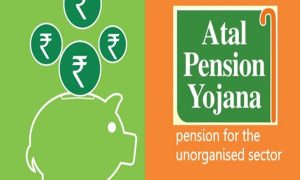Money is really funny. At times it throws up dilemmas as to how we should spend or invest it. And, though these are simple questions, there is a choice to be made. Be it, should you take a personal loan or swipe your credit card?
Buy a brand new set of wheels or simply settle down for a clunker. At times, we just cannot make up our mind as to what is the right thing to do.
Keeping such money related dilemmas in mind, in the past, we have covered two such dilemmas, Gold Vs Gadget and Debt or Investment.
Today, we answer another such dilemma, should you invest in RD or SIP. To know more, read on.
If you are someone who is looking to invest small amount of funds at regular intervals and eventually gather a larger corpus, you have a few options. Recurring deposits and systemic investment plans in mutual funds (MFs) for instance. But, how would you decide which one works for you? But, before that let’s understand what they are in short.
What’s RD? : Recurring deposits (RD) allow you to invest a minimum of Rs 500 every month and thereafter multiples of Rs 100. RD can be opened for a minimum tenure of six months, thereafter multiples of three months and a maximum of 10 years.
All you have to do is choose a fixed date and make a payment of the fixed amount through out the desired tenure. Keep in mind that you are not permitted to change the instalment amount on a later date. If you want to withdraw the RD, you will have to bear the cost of the premature penalty which will vary from bank to bank.
As far as interest rates go, at present the range is 6.50 percent to 8.50 percent based on the tenure and bank you choose. Also, senior citizens get an additional 50 basis points as interest rate.
As far as tax issues go, keep in mind that interest accrued on RDs are taxable at your marginal tax rate.
Systematic investment plan or SIP of mutual funds pretty much work like an RD. Every month on a specific date you should invest a fixed amount into an MF scheme. You can choose to invest as much as Rs 500 a month. The funds get invested as per the objective of the scheme you’ve chosen. It could be a debt, equity or debt-equity heavy scheme. SIPs work well for long and medium terms.
Moreover, you need not worry about market volatility with SIPs capturing both the highs and lows of the market and hence it helps you negate the effects of an unpredictable market cycle. Unlike RD you won’t get a fixed rate of return on your investments. Take for instance, HSBC income short term (G) gave a return of 9.41 percent per annum, from SIP invested from November 1, 2011 to November 1, 2012. And, Kotak Mahindra Debt Income Opportunity (G) gave a return of 9.78 percent per annum, for SIP invested from 1 November, 2011 to 1 November, 2012.
As far as tax goes, you don’t have to pay tax on dividends. However, you will have to pay capital gain tax.
Which works: Most certified financial planners will advise that choosing an SIP works well any day over an RD. Ranjit Dani, a Nagpur-based certified financial planner, said, “Any day SIP is better than an RD. First, RDs give lower returns around 5 percent. But if you take a look at SIP, you could earn better tax adjusted returns with an SIP. Also, SIPs offer better liquidity.” SIP works well for short and long term.
So, are RDs totally useless? Not really. RD may work better for those in the lowest tax bracket and not so much for those in the highest tax bracket. RD is a good starting point for young investors who have just started out and want assured returns. They work even for senior citizens.
For more updates: Like us on Facebook and follow us on Twitter & Instagram




































